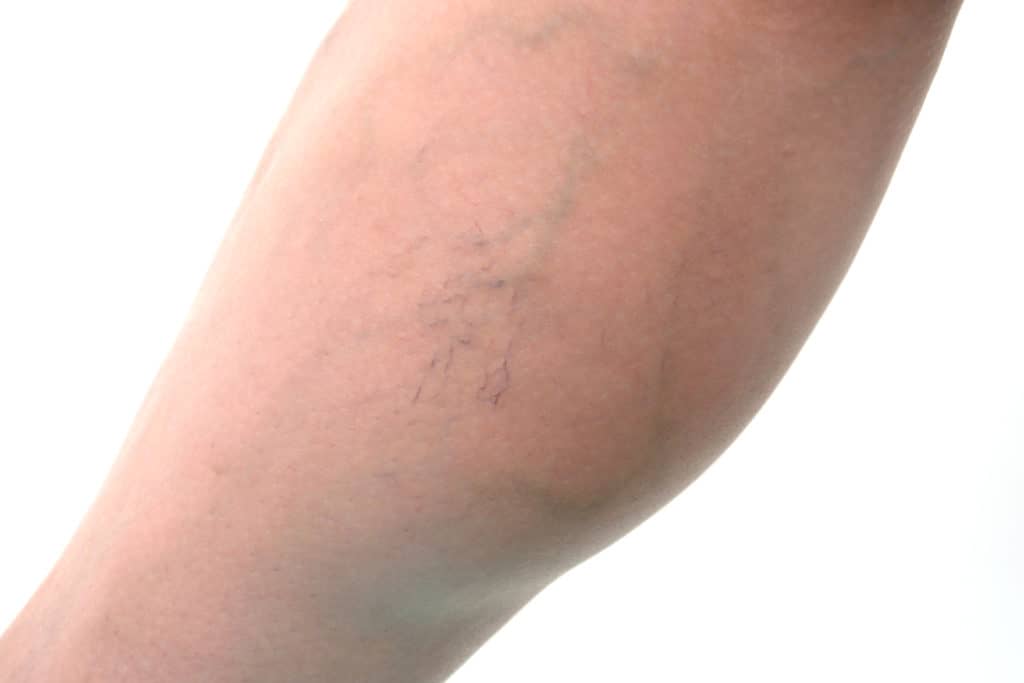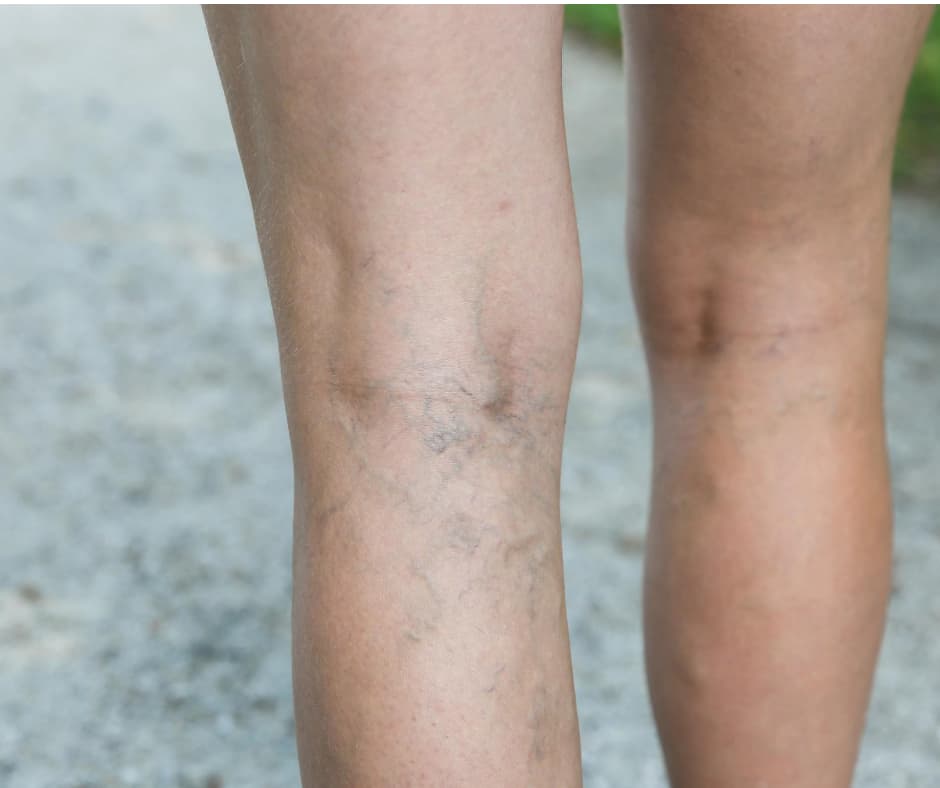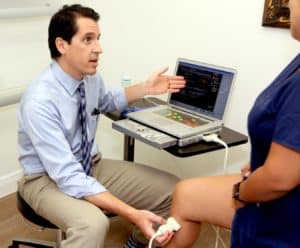Varicose veins (also known as varicoses or varicosities) is a type of venous disease that occurs when damaged valves cause blood to flow in the wrong direction. They appear as enlarged, swollen veins under the skin surface and are typically blue or purple in color. Varicose veins prevention is often on people’s minds when veins start to show.
Varicose veins commonly affect the veins in the legs due to the pressure exerted on them as a result of standing for a long time. This condition affects about 25 percent of all adults and is especially common in women.
It is worth noting that varicose deep veins differ from spider veins: While they are both types of venous disease, spider veins are usually smaller and thinner compared to varicose veins. Also, they typically appear as blue or red webs and are closer to the skin surface. They are mostly found behind the knees, face, and feet but can appear anywhere on the body.
Prevention of varicose veins
As most doctors recommend, making changes to your lifestyle is the best way to prevent varicose veins. Try the following to reduce the risk of the disease:
- Avoid standing for long periods – Taking walks can be a viable way to keep varicose veins at bay. Walking around is particularly important if your job involves a lot of sitting.
- Maintain a healthy weight – Keeping fit through exercises can help keep your weight in check, which is important in reducing the risk of varicose veins.
- Quit tobacco use – Tobacco use causes a range of health problems, including damaging blood vessels, which decreases blood flow. Avoiding tobacco use can help prevent varicose veins.
- Elevate your legs – Raising your legs above your waist enhances blood flow.
- Wear properly fitting clothes – Avoid clothes that are too tight around the waist as they prevent the smooth flow of blood.
- Try compression stockings – Wearing support socks and pantyhose usually compress the veins, which increases blood flow. This can help varicose veins from getting worse.
- Stay active – Living a sedentary lifestyle puts you at risk of varicose veins. Try to stay active by taking walks regularly, exercising, and eating well.

Causes of varicose veins
Varicose veins occur when valves in the veins are not functioning properly. Veins have valves that open and close to allow blood to flow from the rest of the body and back to the heart. These valves also prevent blood from flowing back as a result of gravity. However, certain conditions can weaken the walls of the valves, making them weaker and therefore unable to prevent blood from flowing backward.
Due to the inefficiency of the valves, blood can flow backward and pool in the veins, which causes the veins to twist, bulge, or swell. Some causes of varicose veins include:
- Hormones
- Obesity
- Standing for long periods of time
- Aging
- Pregnancy
- Family history of the disease
- The aging process
Symptoms of varicose veins
The most visible sign of varicose veins is the appearance of blue or purple veins under the skin surface. Common symptoms include:
Bulging veins – Veins can appear twisted, swollen, and rope-like. They mostly appear on the feet, legs, and ankles. Spider webs may appear nearby.
Pain – You can experience pain in the legs, especially behind the knees. Legs can also become sore and itchy. Muscle cramps often occur.
Swelling – Legs, feet, and ankles typically swell and throb.
Heavy legs – Legs often feel tired and sluggish, mostly after physical activity like exercising.
Skin discoloration and ulcers – Varicose veins can lead to skin discoloration if left untreated. In severe cases, you can get venous ulcers on the skin.
Itching – Itching can occur around the veins.
Lipodermatosclerosis – Fat under the skin becomes hard, causing the skin to shrink

Risk factors for varicose veins
Although anyone can get varicose veins, certain factors can increase the risk of the disease. They include:
- Age – The aging process can lead to the weakening of the valves. The loss of elasticity and stiffening that occurs can cause varicose veins.
- Gender – Pregnancies, birth control pills, and menopause, are some of the reasons women are more vulnerable. Female hormones can also cause veins to stretch.
- Lifestyle – Standing for long periods and wearing tight clothes can decrease the circulation of blood, leading to varicose veins.
- Tobacco use – Tobacco users are more likely to get varicose veins.
- Family history – People who have a history of varicose veins can get the disease.
- Obesity – Too much weight puts pressure on the legs, making the veins and valves less functional.
Complications of varicose veins
Although rare, complications of varicose veins can happen. They are:
Ulcers
If you notice a discolored spot on the skin near the varicose vein, you should be wary of ulcers. Painful ulcers can occur near the varicose veins, particularly above the ankles. Be sure to see a doctor in case you suspect the development of ulcers.
Blood clots
Varicose veins cause swelling and pain in the affected veins. Since blood is not flowing as it is supposed to, blood clots can happen. Seek medical attention if you experience pain or swelling as it could be a sign of blood clot.
Bleeding
The swelling that results from the disease can cause blood vessels to burst, which can lead to bleeding. Although the bleeding is minor, it is important to get medical help to avoid any complications.
Treatment for varicose veins
Your doctor can advise on the best treatment to relieve discomfort. Here are some varicose vein treatment methods used:
Elevation – Elevating your legs several times throughout the day can boost blood flow in your veins.
Injection therapy (sclerotherapy) – The doctor can inject a solution into your veins to make the walls of the veins stick together.
Laser therapy – A catheter and laser are used to close a damaged vein. This procedure is called endovenous thermal and is minimally invasive.
Vein surgery – The affected vein is tied to stop blood from pooling. It may also be removed to prevent varicose veins from reappearing.
Elastic stockings – These supportive stockings work by compressing the veins to stop the veins from stretching and help increase blood flow.
When to see a vein doctor
Varicose veins do not pose any harmful health problems. However, it is advisable to seek medical help in case of bleeding, discoloration, swollen veins, or painful red touch on the affected veins. Your healthcare provider can recommend the most appropriate treatment method.
As mentioned here, varicose veins do not pose any health risk to you. To be safe from the disease, you can incorporate home remedies, such as walking regularly and keeping your weight in check to prevent the risk thereof and ensure you live a healthy and productive life. Are you struggling with varicose veins or spider veins and want to get rid of them? Contact us at East Bay Vein Specialists for special treatment and professional advice on preventing varicose veins in the future.
Sources:
https://www.mayoclinic.org/diseases-conditions/varicose-veins/symptoms-causes/syc-20350643


